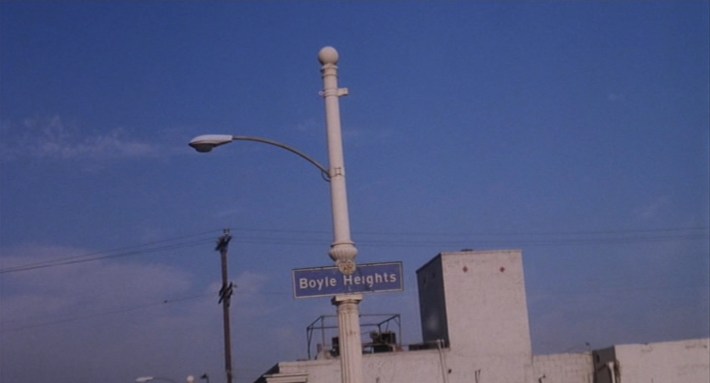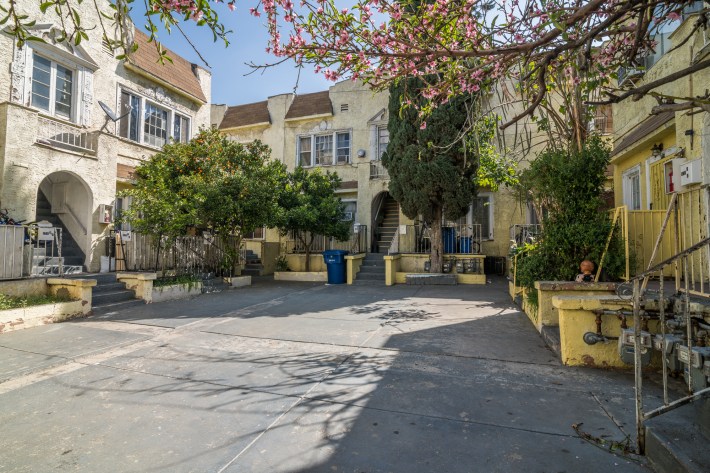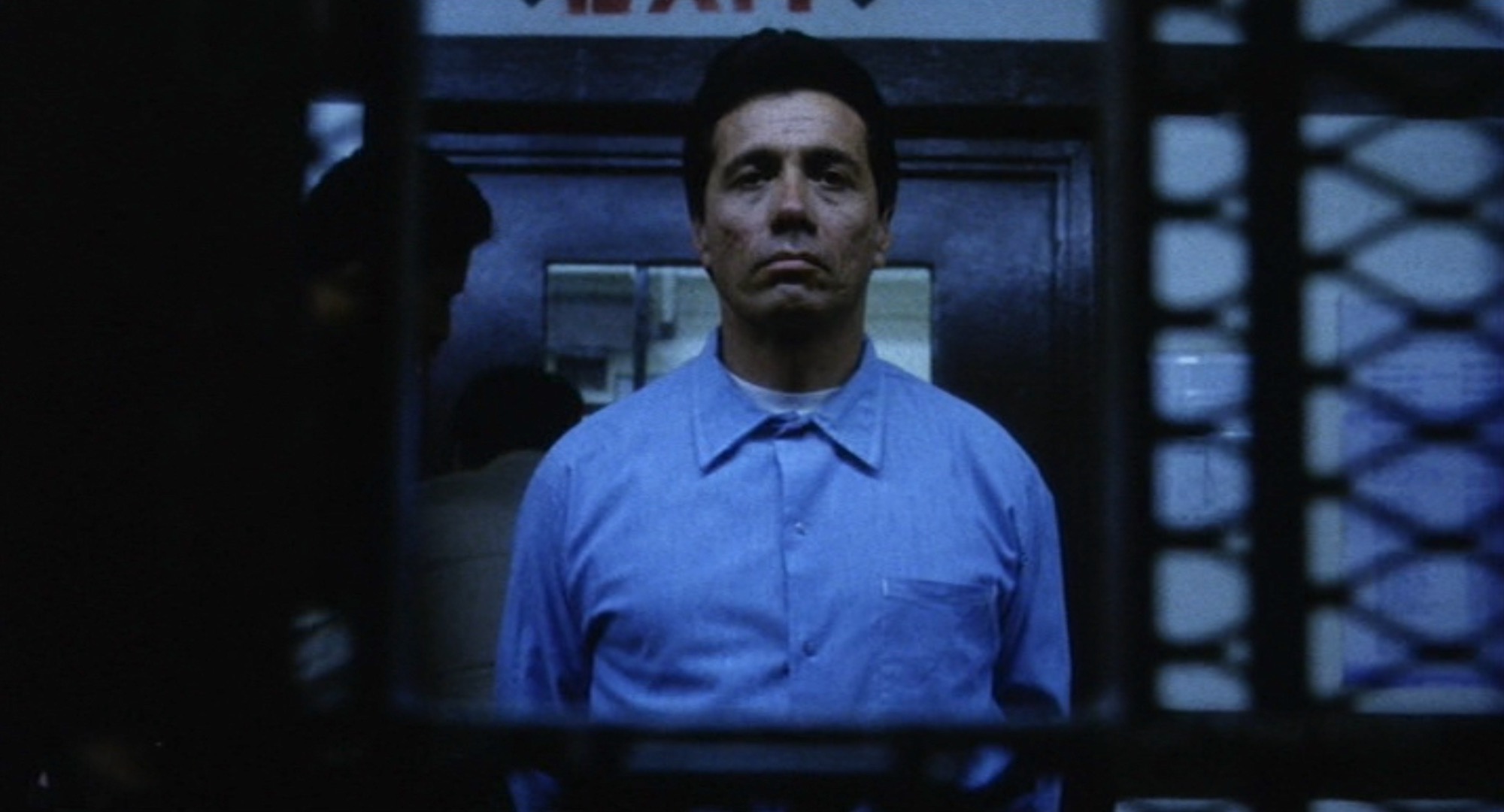In speaking with American Me location manager and associate producer Antoinette Levine, it’s clear that the film’s director and star, Edward James Olmos, was acutely aware of the risks involved with making a film based on the rise of the Mexican Mafia.
“We all got the speech coming in,” says Levine. “There was always that sense of knowing that there was a possibility that some sort of threat, or violence, or worse could potentially occur.” She says that upon location scouting, Olmos showed empathy should his department heads want to exit the project over fear of their safety. Levine tells L.A. TACO, “Everybody was in it. Nobody walked.”
Almost from its inception, and certainly through its release on Friday, March 13, 1992, Olmos’s American Me was criticized for what some felt was a muddied and blasphemous depiction of the rise of La Eme, the most powerful and influential Chicano crime organization both within the California prison system and on the streets of L.A. Concerning, however, weren’t necessarily the objections of stale-voiced pundits of the era that continuously condemned sex and violence in cinema. Danny Trejo perhaps best explains the backstory in his memoir, Trejo: My Life of Crime, Hollywood, and Redemption. In short, the screenplay angered leadership of the Mexican Mafia for specific onscreen incidents related to the portrayal of the film’s main character, mob kingpin Montoya Santana, played by Olmos. Santana was based on real-life Mafia boss Rodolfo Cadena, who was murdered at the California Institution for Men, aka Chino, in 1972 at the age of twenty-nine. Disapproval over the project reportedly led to Olmos being targeted and extorted. Two months to the day after the release of American Me, Ana Lizarraga, a highly respected East L.A. gang intervention counselor who worked on the film as a technical advisor and gang negotiator, was gunned down in her driveway.

Roughly 50 minutes of American Me’s 125-minute running time required filming at active prisons and detention centers around California including L.A.’s Central Juvenile Hall, Chino, and, most notably, Folsom State Prison – the only location where Levine recalls members of the crew dropping out due to the intimidating nature of the infamous penitentiary. But when the film moved to the streets of Boyle Heights and East L.A., all involved – perhaps none more so than those working in the locations department – felt the heightened intensity of the story they were telling.
Eastside locations like Evergreen Cemetery and Our Lady of Guadalupe Sanctuary appear in the film, but arguably the best example of the parameters put in place for any American Me location is the Boyle Heights apartment building chosen as the Santana family residence. The two-level complex located on Mathews Street just south of 1st Street and one block east of Soto Street was constructed in 1925. Arching, stucco entranceways, and windows obstruct the modest courtyard; a decorative coat of arms adorns the top of the façade. Apartments facing the courtyard have steps leading up to their front doors, which, cinematically, create opportunities for dynamic staging and camera movement within a relatively small space.


Another building just across the street was chosen for Santana’s best friend and crime partner J.D. (William Forsythe). At the time, the location boasted second-floor balconies visually conveying a tightknit, everybody-knows-everybody community. The orientation of the two buildings, and the turn-of-the-century homes in between, affords Olmos the ability to shoot from one building to the other while seeing the entire street. This feels particularly important in early scenes shot on Mathews Street that take place in the 1950s. “It’s like it was predesigned for this film, in a particular way,” says Levine. “We were given a golden gift of locations where there is no cut to. You literally have the long shot.”


Levine recalls tenants of the main apartment location being excited about the prospect of the movie filming there. “This apartment building just felt like it ended up being the right place at the right time with the right people,” she says.
With the creative aspects cemented, strategic and unyielding logistics were required for the making of a film dealing with adversities in which this neighborhood was deeply embroiled. Without the bars and walls of a prison, the locations department was tasked with forming an airtight set of safeguards in the streets around the production.

By the early ‘90s, gang-related homicides in L.A. County had reached record highs. “Literally the whole region was active gang territory,” says Levine, who, a year after American Me, amassed the locations for the socially charged L.A. drama Falling Down. “We were visitors, and if we wanted to come out alive and unscathed, then we needed to address how to be a visitor in a particular neighborhood.” She recalls that by no means was anyone to wear colors that may have mistakenly identified them as part of a gang.
Part of Lizarraga’s job – likely contributing to her execution-style murder – was to broker a truce between gangs to allow the filmmakers a safe working environment. She also advocated for the hiring of gang members to work as extras on the film.
Working closely with her locations team, police coordinator, production security, and the infamous, later-dissolved LAPD C.R.A.S.H. unit, Levine created an impenetrable fort, so to speak, around the Mathews Street location. She instructed her team to find an enclosed, fenced-in school grounds where the production’s base camp could be staged. “The vision was to literally create a grid around us that would close streets in such a way that there would have to be an access point. I battened down the hatches,” says Levine.
Still, the filmmakers were on edge. Levine says that on a number of nights while filming at the Mathews Street location and in adjacent areas, gunshots were routinely heard. While those shots weren’t directed at the set, people were terrified.
In Lives in Hazard, the hour-long documentary about the making of American Me, Olmos addresses his crew from the courtyard of the Mathews Street complex. As the somber crowd listens intently and an LAPD officer, arms folded across his chest, looks around sternly, the director informs them that, over the course of the previous week, three homicides occurred in a two-block radius of the location. Olmos calls it “good luck” that none of these deaths were associated with the film.

Though working on American Me posed serious risks to all involved, what shouldn’t be lost within the self-reflexive dangers of making the film is the pervading sense of community that, Levine says, connected the filmmakers with each other and the neighborhood.
“The Mathews Street complex was like a gift from the creative gods that it actually existed,” says Levine. “It was like a cultural campus. There were all these lives going on in an intimate, enclosed complex each with their own story, each with their own sorrows and joys. It was a reflection of the heart of the film in that way of a culture that will stay alive forever regardless of what challenges it has to meet from the greater society along the way.”

In the behind-the-scenes documentary, Olmos acknowledges that it was atypical for a studio film to shoot in the midst of Eastside gangland violence, but capturing the reality of the neighborhood was of the utmost importance.
Levine praises Olmos’s uncompromising dedication to the film and the people of the neighborhood in which the movie was made. “He did not isolate himself. He put himself right out there and we walked the streets,” says Levine. Upon scouting locations, Levine recalls Olmos “telling kids that they needed to finish school and college if they wanted to succeed like him. He was always mentoring.” It was also clear that Olmos’s influence, celebrity, and social and cultural activism most certainly made it possible to access locations the filmmakers wouldn’t have been able to otherwise. “He is a cultural king,” says Levine. “He has made his people proud and he has a humbleness around that adoration, if you will. And his humbleness is derived from his knowing of his people’s struggle in these United States of America.”
Through his management, Olmos declined to comment for this story due to his schedule.
Follow Jared on Twitter at @JaredCowan1.







